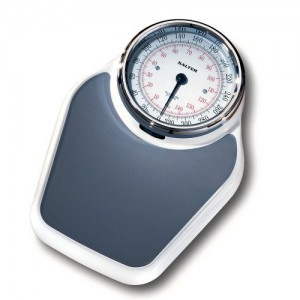Normally people’s main aim when beginning personal training or exercise is to lose weight, whether it be a few pounds or few stone. A surprisingly high number of people nowadays have become completely obsessed with constantly weighing themselves and reaching their ‘goal weight’ and in doing so often forget about other improvements that have been made through training. 
There is a big difference between weight and body fat. Weight simply tells you the sum weight of the whole body’s components (muscle, fat, organs, bone, fluids etc) whereas body fat gives you a percentage of the amount of fat that your body carries. Your weight can fluctuate daily due to things like stomach, bowel and bladder content, water retention and muscle loss and gain. Body fat measurement is a far more accurate way of assessing your progress, as weighing yourself using scales isn’t giving you a real indication of how much muscle you have built and how much leaner you have become. It’s very common for people to weigh the same or even slightly more after training hard consistently for a period of time. This is because they’ve gained muscle and muscle weighs more than fat in our bodies. When their body fat measurement is taken though, it is lower than when they began. In fact, two people of a similar height can weigh the same but look completely different as they have different body fat percentages.
Various methods are used to measure body fat. Health and fitness professionals will typically use either calipers to measure skinfolds in particular areas of the body or bioelectrical impedance scales which send tiny electrical impulses through the body. Below is a table to give you an idea of the different ranges and categories of body fat for men and women:
| Description |
Women |
Men |
| Essential fat |
10-13% |
2-5% |
| Athletes |
14-20% |
6-13% |
| Fitness |
21-24% |
14-17% |
| Average |
25-31% |
18-24% |
| Obese |
32+% |
25+% |
A healthy person who exercises regularly should be looking to keep their body fat within the ‘average’ or ‘fitness’ category. In order to lose body fat, the key is to incorporate strength training into your workouts and not just focus on cardio. Strength and resistance training is the best type of exercise for increasing muscle mass and helping your body to burn more fat. Diet is also vital. Try to eat healthily consistently and avoid as many processed foods as you can as well as drinking plenty of water to ensure your body remains well hydrated.
It’s not all about the number that you see when you stand on the scales! Body fat measurement is a far better way of assessing your progress in terms of training. With all the attention often being on weight, people can forget about other great improvements that they have made through exercising such as increased strength and fitness levels, better stamina and endurance and a more positive mind set and mood. These, in my opinion, are some of the best improvements that come from exercise and eating healthily and should not be overlooked or lost in focusing too heavily on weight.
